How I Got Into Backyard Farming
How I Got into Backyard Farming
Idea:
Backyard Farming sounds crazy, so let’s try it
What is it?
There is a movement where regular people are turning their backyards into micro farms and doing things like:
Growing all the salad ingredients they need for a year (minus the Russian dressing)
Growing 100 pounds of potatoes on a tiny patio
Raising a couple of chickens for meat and/or eggs
Raising Talapia fish to eat
Raising rabbits or quail for meat
Converting lawns into mini farms producing staple crops like corn and wheat
Using things like fences, walls, posts and garages to trellis things like grapes, squash, beans, and melons
Growing 100 pounds of garlic and selling it for $10 a pound at farmers markets
Raising bees and selling honey for $7 a pound at farmers markets
Making your own Beer, Wine, Meade, Cider or Brandy
Why this could be Awesome:
The goal here is that you do these things on your property without anyone really noticing or caring. The goal is not to start up some “you might be a redneck if” style crazy farm on the lawn and instantly tank the neighborhood housing prices in the process. With this project the goal is to be clandestine, or at least unnoticeable. Do it right and neighbors will compliment how well your property looks as you bring them goodies from the garden all year long. Other reasons this scheme could be awesome:
Lower your grocery bills
Be totally organic and chemical free
Potentially earn income
Less lawn mowing / Less using anything that runs on gas
Could be Fun
My Situation:
I live in a typical Cape Cod house on a quiet street in a medium sized city in Ohio. I have neighbors very close on both sides and in the back. In total I have about 0.3 acres of “land” which consists of a small front yard and a descent sized backyard enclosed in a chain link fence. I have a tiny 1-car garage, a small patio, and normal guy yard tools.
Research Phase:
I went to the library and to the internet and looked up the following topics:
Small space / patio / container gardening
Permaculture / food forests / Organic Gardening
Homesteading / Survivalist / Prepper (I’m not a prepper)
Aquaponics
Take a look at some YouTube videos on people who have backyard food forests. Also Jeff Lawton’s videos on this topic are amazing. I also recommend the book Gaia’s Garden and the website Permies.com
Let’s Do This:
And so when Spring rolled around I began… The plan was to start small and incorporate little things at a time into my landscape, wait until I was used to them and make sure no one freaked out, and then slowly expand.
Things I have Accomplished:
I’m on year three now and I think things are going relatively well. Here’s a summary of things I have been able to do. Note: Each topic below will have its own full post soon.
Toxin Free: Gave up insecticide, commercial fertilizer and other toxins totally.
Compost: Created a composting system that produces about 1 pickup truck load of compost per year.
Waste Reduction: Generate zero yard waste. Generate 1-2 bags of garbage per week, which is a reduction from 5 bags. This reduction is due to composting, canning, burning paper with wood fires and using ashes in garden, reduction of processed foods purchased, etc.
Rainwater harvesting: Made and Installed 2 Rain Barrels (55 gallons each), with a system to auto water the front yard with the flip of a switch using garden hose and gravity
Lawn Reduction: More than half of my front yard is garden (but doesn’t look out of the ordinary at all). Converted 1/3rd of my backyard to garden
Hugelkultur: Installed about 56 feet of Hugelkultur mounds
Heavy Mulching: Threw down 2 dump truck loads of mulch, 3 pickup load of hay (about 40 bales) and 1 pickup load manure.
Sheet Mulching: Experimented with Sheet mulching using cardboard and other materials to convert lawn to garden without digging.
Less Weeds: Cut weeding time down by using mulching techniques as well as chop & drop methods. (you still get weeds, but less, and easier to pull)
No Dig / No till: Gave up Tilling totally. There are many good reasons to do this.
Less Mowing: Mow only about 4-6 times a year (due to letting certain “weeds” grow into the lawn such as clover which doesn’t grow very tall). Also, I mow the front lawn every other time with a gas free reel push mower, which saves gas and is very quiet (and a good workout).
Less Watering: Cut watering in half (because of the rain barrels, a well-placed swale to slow down run-off and Hugelkultur mounds which soak up water like crazy)
Perennial Food: Planted long-term plants such as 2 apple trees, 1 cherry tree, 2 blueberry bushes, 2 raspberry and 2 blackberry bushes, 10 square feet of strawberries, 2 grapevines, 8 asparagus plants.
Quasi Perennial Food: Tomato patch comes back 80% every year from self seeding. Also get a lot of self seeded greens and squash, by not picking everything.
Seed Starting: Beginning to perfect a seed starting regimen that is actually starting to pay off. Seed starting takes practice!
Big Crops: Set to plant about 50 garlic plants this year. Set to plant about 30 potato plants this year (these two plants both can be mixed into the front yard landscape). Planted about 60 mustard green plants (also a beautiful plant)
Medicine: Growing comfrey to be used for medicinal purposes as well as green manure / mulch.
Cool mini-Projects: Things I have made from my backyard include Grape Juice, Vinegar, Tomato juice, Dijon Mustard, Tomato sauce, Roasted Dandelion Root coffee, Echinacea tincture, garlic braids, burn medicine, flower arrangements, and lots of delicious meals.
Things I want to Try:
There are so many things in backyard farming/ urban permaculture I still want to try. Here is my to-do list:
Plant way more fruit trees. The ultimate goal of the permaculture “food forest” is basically to have tons of food growing everywhere on your property that requires little to no maintenance. The hardest part should be picking all of the bounty. Of course a key to this end state is to have lots of mature fruit trees that produce large quantities of high calorie foods year after year. And even in cold Ohio, we can grow so many different kinds of fruit like cherry, apple, peach, plum, apricot and lots of berry and nut trees
Plant a successful cash crop. I want to sell something at the farmers market! I think garlic will be my first attempt because it is 100% maintenance free and 99% guaranteed to come up beautiful. It also sells for a lot of money. So far I have been eating mine, but each year I plant more and more. One other nice thing is that you can space them really close together and plant them almost anywhere on the property, including right out in the front yard. I tried to sell my mustard greens but nobody wanted them :(
Get bees. Although probably not for everyone, I want bees. There is some cost and some work involved, but you get honey, wax and increased pollination, and that is more than enough for me to want to try it.
Meat? I’m not allowed to have chickens or any animal like that in my city. Rabbits could work since they are silent and you could raise them somewhere covert and no one would know you had them. But I don’t think I could kill and clean rabbits I raised. I looked into pheasant and quail but same thing there.
Eggs? I’m not yet to the point where I’m going to defy my local laws and get a couple of chickens for egg productions, but If you are, there is a whole community on the net of covert chicken raisers. The more hip urban cities such as St. Louis have legalized it, so do some research and go for it. Don’t get any roosters unless you want to anger everyone within a 5 mile radius.
More Mulch! Once you get into this hobby you quickly find that your soil sucks. If you have a typical American house your soil is terrible because for the last 50 years your property has consisted of 90% grass which some guy mowed short twice a week and probably dumped mass quantities of weed and feed and other chemicals onto it. All of the clippings were bagged and sent to the landfill and heavy rains continuously washed away any soil that happened to build up. The fix is to throw down tons and tons of organic material like leaves, cut up weeds, hay, mulch, coffee grounds, manure, compost, etc. But if you are a regular person with an office job you probably don’t have access to as much of this organic mulch as you need. I’m always on the lookout on Craigslist for free manure and mulch, but it can be hard to come by. You can grow your own, but this takes time.
Flowers I got so caught up with food that I realized I didn’t plant many beautiful flowers that can serve multiple purposes. I want them for cut flower arrangements as well as for medicinal purposes and sheer beauty. Next year there will be flowers!
Edible Seeds: I also want to get some edible seeds such as sunflower and pumpkin, yum! Per square foot, sunflowers are one of the most productive foods you can grow, calorie wise.
More Posts from Copperfingertips and Others
How about a Solarpunk moodboard 🌻🌍

solarpunk……good
solarpunk moodboard for anon
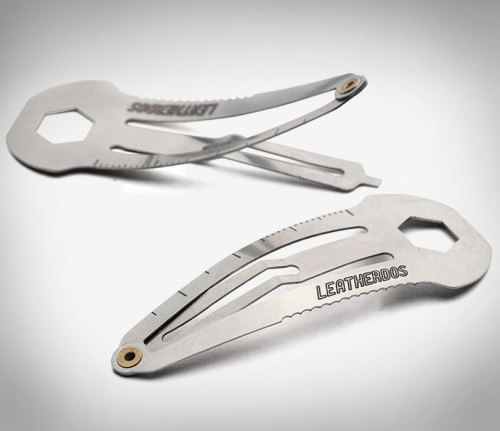
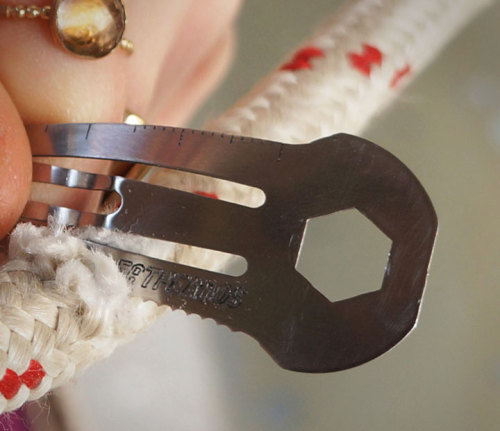
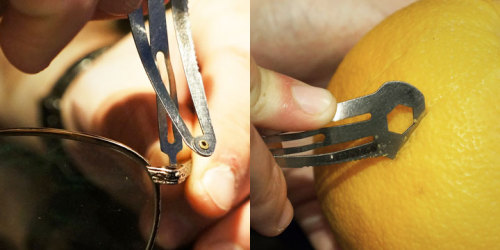
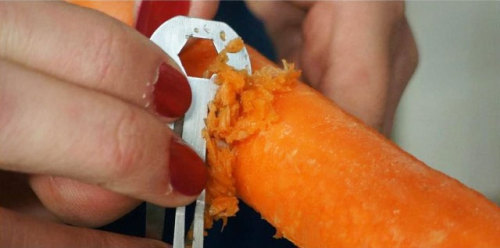
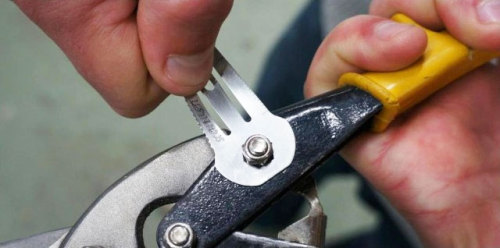
The Leatherdos is a hair clip that doubles as a multi-tool that combines 5 different tools in a tiny hair clip: screw-drivers, a wrench, a trolley coin, a ruler, and a cutting edge.
—->http://odditymall.com/leatherdos-is-a-hair-clip-multi-tool



Printed Solar Bio-Batteries
Led by biotechnologist Marin Sawa, a group of researchers at Imperial College London have devised a way to print solar cells onto paper. They use an inkjet printer to place a conductive layer of carbon nanotubes and a layer of living cyanobacteria to create devices which can capture and store solar energy.
In their proof-of-concept experiment, the cyanobacteria survived the printing process and were able to produce energy from photosynthesis. The trial panel was palm sized and gave enough energy to power a small LED light. Even better, being little more than paper, carbon, and bacteria, the bio-cells are fully biodegradable.
The work is part of an emerging field of science called microbial biophotovoltaics (presumably related to the biovoltaics I’ve mentioned here before) which uses algae and cyanobacteria to generate energy. The energy generated may be small, but it’s also cheap and easy to manufacture, and the microbes can continue generating electricity after dark, using compounds made during daylight.
The bio-batteries aren’t intended to replace standard photovoltaics for large scale energy production. Instead, they can provide an inexpensive and renewable source of energy for specific uses, such as air quality monitors and healthcare applications.
“Imagine a paper-based, disposable environmental sensor disguised as wallpaper, which could monitor air quality in the home. When it has done its job it could be removed and left to biodegrade in the garden without any impact on the environment.” – Marin Sawa
Sawa et al (2017) – open access
Right to Darkness/Right to Night
Human beings have lived with a relatively strict day/night cycle for as far back as humans have been around. Yes, there was fire, but the rooms were still relatively dim, and outside was almost always just lit by the moon. Daily darkness, where not much could get done has been a part of human culture and biology forever.
Now we have the problem of light polution, where the light of electricity spreads everywhere and then you can’t see the stars at night in the cities. Obviously it’s good that we have electric lights. There are many people who want to be out doing things at night. But it’s also a problem, because for most, nightime is a time of calm and processing the day, and it can be difficult for the human brain to know that it’s time for that to happen if it has too much light coming at it.
I think in Solunarpunk societies, people would have a recognized right to darkness/night, that made itself apparent in the design of light sources and buildings, so that anyone who wanted to could enjoy the dark, cool, and quiet regardless of where they live.
This could manifest as rules about how streetlights can be made, so that the designs that are used are the ones that have the least amount of light seepage
Possibly different light zones, so the bars and clubs and other nightime activity stuff is all in one area, so those people can be safely lit, while other neighborhoods have street lights that only come on if someone is walking there, and are as unobtrusive as possible, so that people can stargaze and sleep in peace.
Inside houses, there might be automatic window darkeners that activate whenever you turn on a light, so the outside isn’t affected, that then turn transparent when the light is off for long enough.
Most houses would have smart lighting with a “night mode” that kept the lighting warmer and dimmer. If you had no lights on, red floor lights will turn on if it senses you moving so you can see where you’re going in safety.
Or maybe people just start using their night vision for more things. People just don’t turn on the lights at night if they don’t have to.
I imagine that in a right to night would also mean that it would be expected that work ends at sunset. People are free to pursue their own passions at night, and are free of daytime responsibilities. No one could pressure someone to stay later than they wanted to, but especially after sunset, because that would be extremely rude and people would call them out for it.
Stargazing would become an important family activity. Children would grow up knowing the names of all the constellations they could see, as well as the names of the planets and the stars. A sense of wonder about our universe would begin to arise again in our society.
Any moon bases built in the future would be on the side of the moon that always faces away from us, just in case the light could be seen at night. There would be observation sites on the side facing Earth that are too small to be seen, but are connected to each other underground. These observation sites would be open and available all the time, for anyone to come and marvel at the beauty of our home planet.

About 50 people answered “What does solarpunk mean to you?“ during my first giveaway—both new and familiar to solarpunk—and this is the word cloud of their replies. Reblog to “show don’t tell” what solarpunk is all about.


Self-watering capillary planters
This water-saving ‘ready-made garden’ design is popular among urban gardeners here in Denmark: it’s comprised of a simple styrofoam planter, and a 40L soil bag.
Holes are cut in the top and bottom of the soil bag, and soil is pushed into three pillars that reach down into a water reservoir. The reservoir is filled with water and fertiliser through a channel on the side of the planter; capillary action (and eventually, plant roots) draw the water up.
The rate of evaporation is much lower with bottom-watered plants, and the styrofoam also keeps the water cool. The reservoir can hold a week or more of water.
A popular DIY version involves using plastic tubs, creating a reservoir underneath with bottles, or a permeable barrier.

Self Irrigating Planters Made Easy
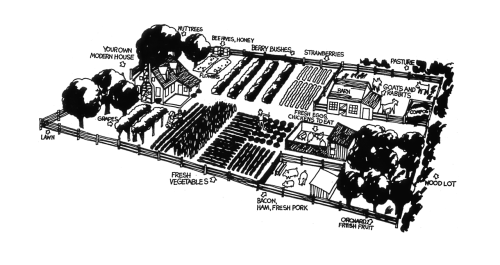
Self Sufficiency, 1970s
The village of Kamikatsu in Japan has taken their commitment to sustainability to a new level. While the rest of the country has a recycling rate of around 20 percent, Kamikatsu surpasses its neighbors with a staggering 80 percent.
video / youtubechannel : Great Big Story
-
 thatautisticlesbian liked this · 3 weeks ago
thatautisticlesbian liked this · 3 weeks ago -
 halfbakedhashbrown reblogged this · 3 weeks ago
halfbakedhashbrown reblogged this · 3 weeks ago -
 halfbakedhashbrown liked this · 3 weeks ago
halfbakedhashbrown liked this · 3 weeks ago -
 theo-in-the-toaster reblogged this · 3 weeks ago
theo-in-the-toaster reblogged this · 3 weeks ago -
 savedforlaaater reblogged this · 4 months ago
savedforlaaater reblogged this · 4 months ago -
 tpwkluv liked this · 6 months ago
tpwkluv liked this · 6 months ago -
 forgotten-tuesdays reblogged this · 6 months ago
forgotten-tuesdays reblogged this · 6 months ago -
 nessbutterfly liked this · 6 months ago
nessbutterfly liked this · 6 months ago -
 beautifulbutterfly578 liked this · 10 months ago
beautifulbutterfly578 liked this · 10 months ago -
 linguisticsho liked this · 1 year ago
linguisticsho liked this · 1 year ago -
 nuovamagia liked this · 1 year ago
nuovamagia liked this · 1 year ago -
 xxtheturtlefromhellxx reblogged this · 1 year ago
xxtheturtlefromhellxx reblogged this · 1 year ago -
 believeandalwayslove liked this · 1 year ago
believeandalwayslove liked this · 1 year ago -
 encyclopaedic-rage liked this · 1 year ago
encyclopaedic-rage liked this · 1 year ago -
 mythweavcr reblogged this · 1 year ago
mythweavcr reblogged this · 1 year ago -
 puppeteerbutler liked this · 1 year ago
puppeteerbutler liked this · 1 year ago -
 songs-of-solitude liked this · 1 year ago
songs-of-solitude liked this · 1 year ago -
 simpleeverytin liked this · 1 year ago
simpleeverytin liked this · 1 year ago -
 darkhorse99 liked this · 1 year ago
darkhorse99 liked this · 1 year ago -
 decimadeathing liked this · 1 year ago
decimadeathing liked this · 1 year ago -
 crystalistrappedintheinternet reblogged this · 1 year ago
crystalistrappedintheinternet reblogged this · 1 year ago -
 fallen-starr liked this · 1 year ago
fallen-starr liked this · 1 year ago -
 noearthmoon liked this · 1 year ago
noearthmoon liked this · 1 year ago -
 skeletonboygirl reblogged this · 1 year ago
skeletonboygirl reblogged this · 1 year ago -
 ohleahdarling liked this · 1 year ago
ohleahdarling liked this · 1 year ago -
 fivefingers-through-fire liked this · 1 year ago
fivefingers-through-fire liked this · 1 year ago -
 alexanderarcane liked this · 1 year ago
alexanderarcane liked this · 1 year ago -
 the-behaviorist reblogged this · 1 year ago
the-behaviorist reblogged this · 1 year ago -
 catdragonartist reblogged this · 1 year ago
catdragonartist reblogged this · 1 year ago -
 catdragonartist liked this · 1 year ago
catdragonartist liked this · 1 year ago -
 phoenixmakeswords reblogged this · 1 year ago
phoenixmakeswords reblogged this · 1 year ago -
 blueinkblot reblogged this · 1 year ago
blueinkblot reblogged this · 1 year ago -
 drafty-castle reblogged this · 1 year ago
drafty-castle reblogged this · 1 year ago -
 terrifyingtiny-t-rex liked this · 1 year ago
terrifyingtiny-t-rex liked this · 1 year ago -
 musthavesims liked this · 1 year ago
musthavesims liked this · 1 year ago -
 snufkins-trainee reblogged this · 2 years ago
snufkins-trainee reblogged this · 2 years ago -
 maia-radfemdu liked this · 2 years ago
maia-radfemdu liked this · 2 years ago -
 annoyinglyshortbarbarian liked this · 2 years ago
annoyinglyshortbarbarian liked this · 2 years ago -
 gothopera reblogged this · 2 years ago
gothopera reblogged this · 2 years ago -
 reference-edwardcollectsurns reblogged this · 2 years ago
reference-edwardcollectsurns reblogged this · 2 years ago -
 bumblebeeappletree reblogged this · 2 years ago
bumblebeeappletree reblogged this · 2 years ago -
 ae3qe27u liked this · 2 years ago
ae3qe27u liked this · 2 years ago -
 nerdsgaysandarcherybabes liked this · 2 years ago
nerdsgaysandarcherybabes liked this · 2 years ago -
 runaway-ramblings liked this · 2 years ago
runaway-ramblings liked this · 2 years ago -
 squashonesquashtwosquashthree reblogged this · 2 years ago
squashonesquashtwosquashthree reblogged this · 2 years ago





